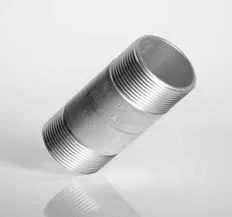-
Cangzhou Yulong Steel Co., Ltd.
-
Phone:
+86 13303177267 -
Email:
admin@ylsteelfittings.com
- English
- Arabic
- Italian
- Spanish
- Portuguese
- German
- kazakh
- Persian
- Greek
- French
- Russian
- Polish
- Thai
- Indonesian
- Vietnamese
- Zulu
- Korean
- Uzbek
- Hindi
- Serbian
- Malay
- Ukrainian
- Gujarati
- Haitian Creole
- hausa
- hawaiian
- Hebrew
- Miao
- Hungarian
- Icelandic
- igbo
- irish
- Japanese
- Javanese
- Kannada
- Khmer
- Rwandese
- Afrikaans
- Albanian
- Amharic
- Armenian
- Azerbaijani
- Basque
- Belarusian
- Bengali
- Bosnian
- Bulgarian
- Catalan
- Cebuano
- China
- China (Taiwan)
- Corsican
- Croatian
- Czech
- Danish
- Esperanto
- Estonian
- Finnish
- Frisian
- Galician
- Georgian
- Kurdish
- Kyrgyz
- Lao
- Latin
- Latvian
- Lithuanian
- Luxembourgish
- Macedonian
- Malgashi
- Malayalam
- Maltese
- Maori
- Marathi
- Mongolian
- Myanmar
- Nepali
- Norwegian
- Norwegian
- Occitan
- Pashto
- Dutch
- Punjabi
- Romanian
- Samoan
- Scottish Gaelic
- Sesotho
- Shona
- Sindhi
- Sinhala
- Slovak
- Slovenian
- Somali
- Sundanese
- Swahili
- Swedish
- Tagalog
- Tajik
- Tamil
- Tatar
- Telugu
- Turkish
- Turkmen
- Urdu
- Uighur
- Welsh
- Bantu
- Yiddish
- Yoruba

Dec . 12, 2024 02:38 Back to list
eccentric concentric reducer
Exploring Eccentric and Concentric Reducers Essential Components in Pipe Systems
In the world of plumbing, construction, and industrial piping, the importance of fittings cannot be overstated. Two commonly utilized types of fittings are eccentric and concentric reducers, both of which serve to change the diameter of pipes efficiently. Understanding the differences between these two types of reducers is crucial for choosing the right one for a given application.
What are Eccentric and Concentric Reducers?
Reducers are piping components that allow for the transition between different pipe sizes. This is essential in various applications, such as water supply systems, HVAC systems, and chemical processing. The primary distinction between eccentric and concentric reducers lies in their design and the manner in which they alter the flow of fluids.
Eccentric Reducer An eccentric reducer maintains a consistent horizontal alignment of the pipe, making it easier to drain the fluid completely. This is achieved by having one side of the reducer offset, creating an asymmetrical design. Eccentric reducers are particularly advantageous in applications where air pockets may form and need to be eliminated. Their design facilitates smooth transitions, minimizing turbulence and pressure drops, which in turn protects the integrity of the system.
Concentric Reducer In contrast, concentric reducers have a symmetrical design, which means that their smaller and larger diameters are aligned at the center. This design creates a smooth and gradual transition that preserves the overall flow of liquids. Concentric reducers are commonly used in situations where a vertical alignment is critical, as they do not alter the vertical alignment when changing pipe sizes.
Applications and Advantages
The choice between eccentric and concentric reducers often depends on the specific requirements of the pipeline system.
Eccentric Reducers These are often favored in drainage applications, where maintaining a low point for the flow is crucial. They are ideal for horizontal piping systems as they prevent the accumulation of air and ensure that the system operates at optimal efficiency. Moreover, eccentric reducers can facilitate the integration of various equipment, such as pumps and valves, without compromising flow rates.
eccentric concentric reducer

Concentric Reducers Generally preferred in vertical applications, concentric reducers are excellent for maintaining a uniform fluid flow in systems where verticality and alignment play pivotal roles. They also provide seamless transitions in longer pipelines, reducing turbulence when liquids or gases are transported under pressure. This feature is particularly beneficial in the oil and gas industry, where efficiency and flow accuracy are critical.
Factors to Consider When Choosing a Reducer
When selecting between eccentric and concentric reducers, several factors should be taken into account
1. Pipe Alignment Consider whether the pipes will run horizontally or vertically. For horizontal systems, eccentric reducers are often the better choice; for vertical systems, concentric reducers are preferred.
2. Fluid Dynamics Assess the type of fluid being transported. If the fluid is prone to forming air pockets, an eccentric reducer is advisable. Conversely, for fluids that require smooth transitions, concentric reducers work better.
3. Installation Space Evaluate the physical space available for installation. Eccentric reducers may require more space due to their offset, while concentric reducers offer a more compact option.
4. Cost and Material Consider the cost implications and the materials involved, as different applications may require different materials based on corrosion resistance, pressure ratings, and temperature tolerances.
Conclusion
In summary, eccentric and concentric reducers play vital roles in piping systems, each offering unique advantages based on their design and application. Understanding these differences is essential for engineers, plumbers, and designers to choose the appropriate reducer for their specific needs. By selecting the right type of reducer, they can ensure a well-functioning, efficient, and reliable piping system.
Latest news
-
ANSI 150P SS304 SO FLANGE
NewsFeb.14,2025
-
ASTM A333GR6 STEEL PIPE
NewsJan.20,2025
-
ANSI B16.5 WELDING NECK FLANGE
NewsJan.15,2026
-
ANSI B16.5 SLIP-ON FLANGE
NewsApr.19,2024
-
SABS 1123 FLANGE
NewsJan.15,2025
-
DIN86044 PLATE FLANGE
NewsApr.19,2024
-
DIN2527 BLIND FLANGE
NewsApr.12,2024
-
JIS B2311 Butt-Welding Fittings LR/SR 45°/90° /180°Seamless/Weld
NewsApr.23,2024











